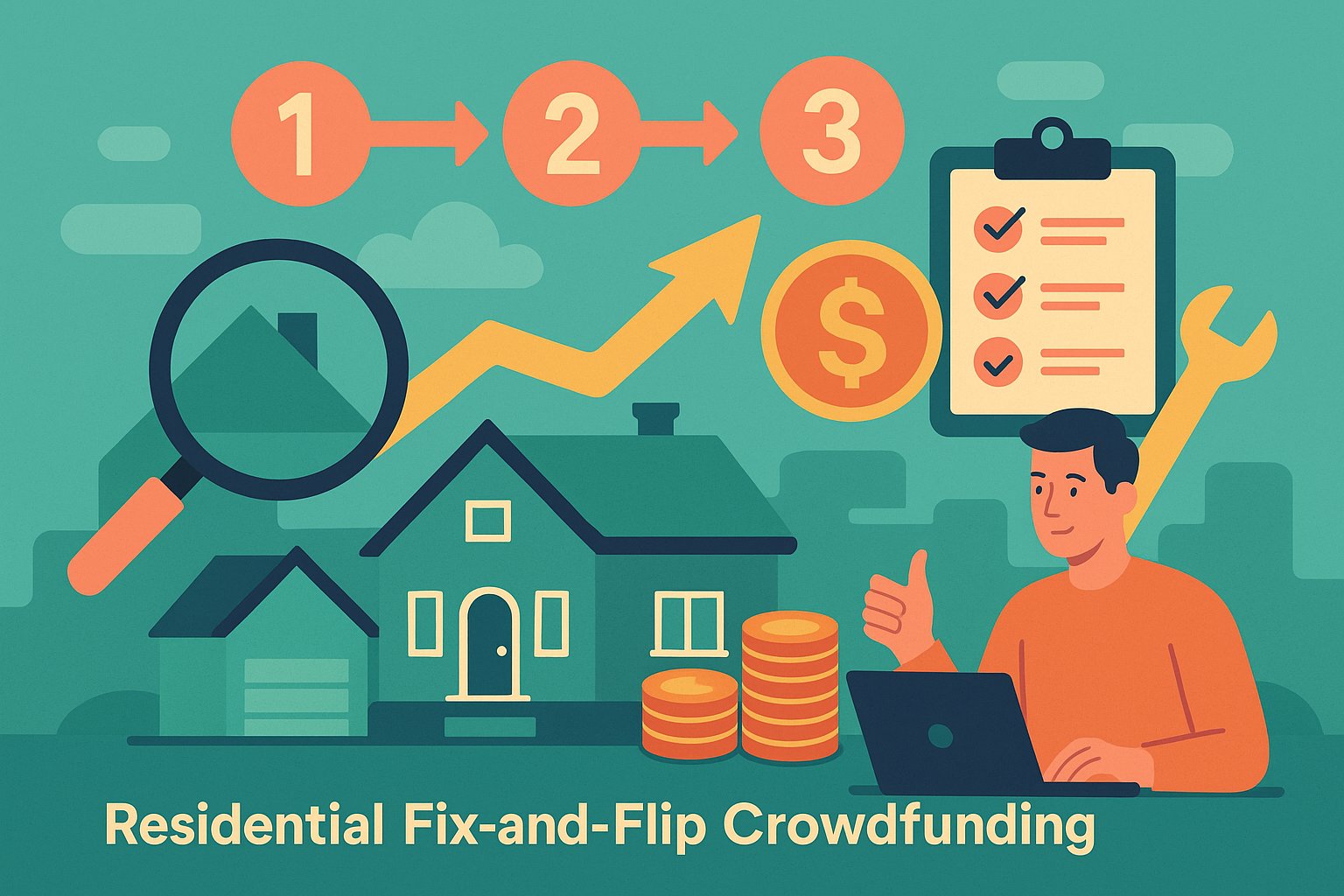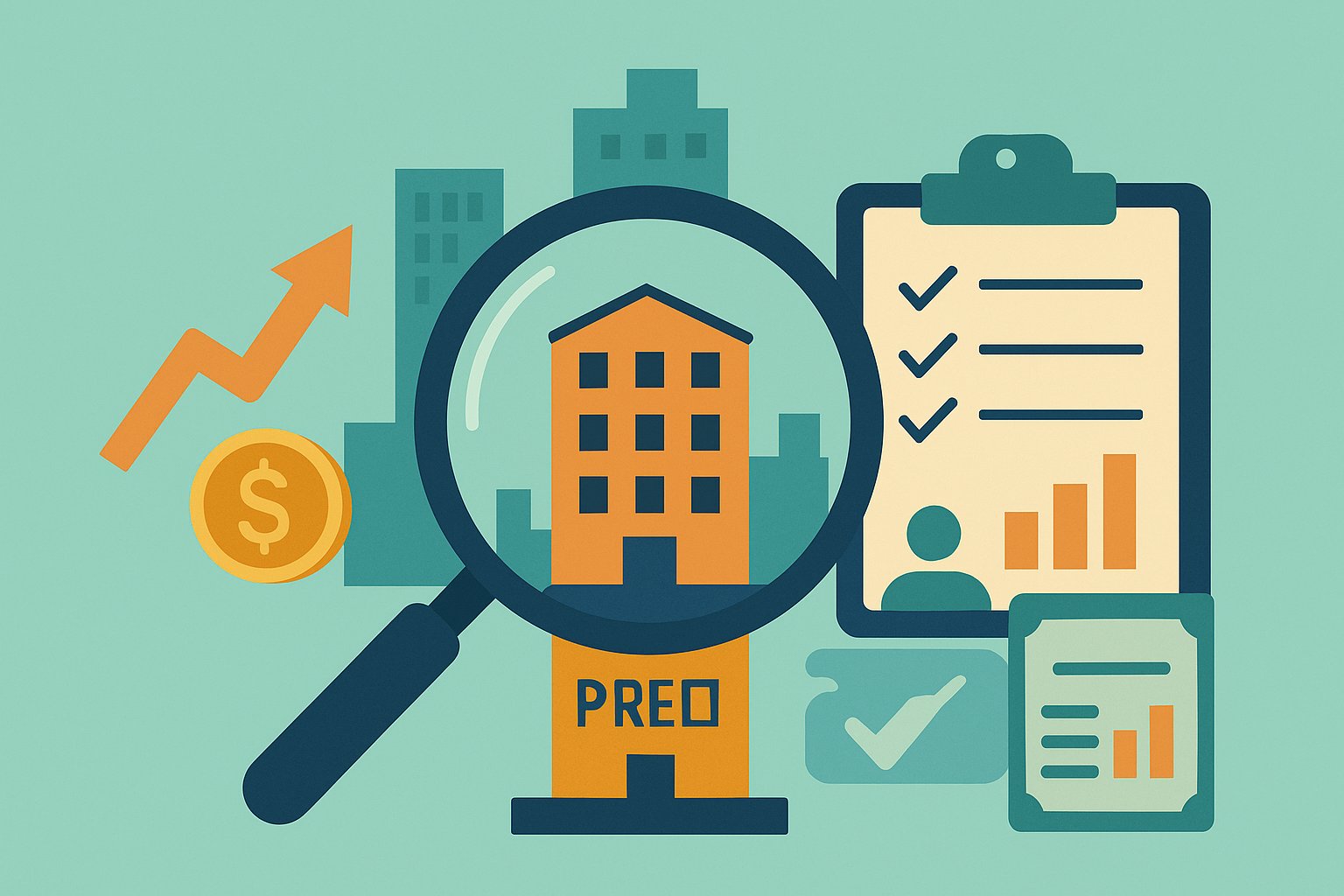Unlocking the World of Fix-and-Flip Crowdfunding
Residential fix-and-flip projects have long captivated investors seeking rapid returns and the thrill of transforming worn properties into stunning homes. Traditionally, these ventures required deep pockets, industry contacts, and hands-on management. Today’s crowdfunding revolution has democratized the process, allowing individual investors to participate in curated renovation deals with modest capital commitments. This step-by-step guide unpacks how you can navigate fix-and-flip crowdfunding—from selecting the right platform to monitoring renovation progress and exiting gracefully—all while balancing risk and reward.
Discovering the Appeal of Crowdfunded Fix-and-Flip Projects
At its core, a fix-and-flip involves acquiring undervalued or distressed properties, renovating them efficiently, and selling for a profit within a relatively short timeframe. Crowdfunding platforms consolidate capital from multiple investors to fund these projects, streamlining deal sourcing, due diligence, and property management. By contributing as little as $5,000, you gain fractional exposure to renovation upside and defined exit timelines without direct engagement in contractor coordination or permit applications. This model democratizes flipping, spreading both profit potential and execution risk across a community of backers.
Choosing Your Crowdfunding Launchpad
Not all platforms are created equal. As a prospective investor, you should prioritize portals with transparent track records in residential renovations. Look for platforms that disclose total capital deployed in fix-and-flip deals, average hold periods, and historical returns. User-friendly dashboards that display live renovation timelines, budget burn rates, and projected resale prices empower you to stay informed. Additionally, robust due diligence processes—such as third-party property inspections and independent market comps—signal platform credibility. By vetting platforms carefully, you lay the foundation for confident participation in fix-and-flip crowdfunding.
Vetting the Renovation Sponsor
Behind every successful flip is an experienced sponsor team that sources deals, negotiates purchase terms, and oversees contractors. Your due-diligence checklist should probe sponsor backgrounds: their years in real estate, total homes flipped, and realized profit margins. Platforms often profile sponsors with case studies, highlighting challenges faced and lessons learned. A sponsor who communicates delays or budget overruns transparently reflects operational integrity. Where possible, request references or visit completed project sites to gauge craftsmanship quality. Evaluating sponsor credibility ensures that your capital supports renovations led by professionals capable of delivering on promised returns.
Decoding Deal Documents and Financial Projections
Fix-and-flip crowdfunding opportunities come with offering memoranda detailing the acquisition price, renovation budget, carrying costs, and projected sale price. These financial projections yield an estimated profit margin and annualized return for investors. Scrutinize assumptions: are renovation budgets realistic given local labor and materials costs? Are comparables (comps) derived from recent nearby sales of similarly upgraded homes? Does the timeline account for permit lead times and potential weather delays? Platforms that include sensitivity analyses—showing returns under slower sale conditions or budget overruns—demonstrate a commitment to conservative underwriting. By dissecting these projections, you distinguish robust deals from speculative ventures.
Aligning Your Risk Profile and Return Expectations
Fix-and-flip crowdfunding spans a spectrum of risk-return profiles. Conservative sponsors may prioritize cosmetic upgrades—fresh paint, flooring replacement, and minor kitchen enhancements—targeting smaller profit margins within a six- to nine-month window. Aggressive value-add flips tackle structural repairs, extensive remodels, or conversions (such as adding accessory dwelling units), demanding longer timelines and higher budgets but promising greater upside. Your choice depends on your risk tolerance and liquidity needs. If you prefer steady, modest returns, opt for light renovation plays; if you seek outsized profits and can weather timeline extensions, value-add flips may suit you better.
Structuring Your Investment: Equity vs. Debt Models
Crowdfunded fix-and-flip deals typically offer equity or debt structures. In an equity model, investors share proportionally in net sale proceeds after costs, enjoying direct upside but bearing full exposure if the sale underperforms. Debt models provide a fixed interest return—often in the 8% to 12% range—secured by a first-lien on the property. While debt investors sacrifice upside beyond the coupon, they benefit from priority repayment and defined cash flows. Some platforms blend these approaches, offering hybrid structures with fixed interest plus equity participation. Understanding these capital-stack variations helps you align your investment choice with your income objectives and risk appetite.
Navigating Legal Agreements and Investor Rights
Subscription agreements, operating agreements, and senior loan documents outline your rights and obligations. Key clauses include the anticipated hold period, distribution waterfall, and events of default. In equity flips, the waterfall dictates how net profits are split between sponsors and investors after fees. Debt agreements specify interest payment schedules, accrual methods during construction, and remedies if sponsors miss payments. Pay attention to force-majeure provisions—especially important in renovation contexts where permit delays, supply chain disruptions, or natural events can impact timelines. While platforms summarize critical points, consulting a real estate attorney for larger allocations ensures you fully grasp the legal framework governing your investment.
Funding Your First Flip: The Subscription Process
Once you’ve identified a compelling fix-and-flip deal, the subscription process typically unfolds digitally. After completing platform-specific KYC (Know Your Customer) and accreditation checks, you select your investment amount and sign the subscription documents. Funds are wired into an escrow account until the platform confirms the acquisition. Clear communication about funding deadlines and contingencies—such as property inspection results—helps prevent missteps. Upon deal close, you receive confirmations of equity stake or loan assignment and gain access to the project dashboard, where ongoing updates will keep you apprised of renovation milestones.
Monitoring Renovation Progress and Budget Adherence
A robust platform will supply multi-channel updates during the renovation phase. Weekly or biweekly status reports may include contractor work logs, budget burn rates, and site photographs. Some sponsors supplement these with virtual walkthroughs, allowing investors to witness paint colors, fixture installations, and landscaping progress. Monitoring these updates enables you to flag budget overruns or scope changes early. Platforms with escrowed renovation funds release payments in stages—tied to completion milestones—ensuring contractors receive payment only after verified work. This structured draw schedule protects investor capital and incentivizes sponsors to maintain timelines and quality standards.
Dealing with Delays and Cost Overruns
Despite rigorous planning, fix-and-flip projects can encounter delays—from adverse weather to unexpected structural issues uncovered during renovation. Platforms that communicate promptly about such developments foster trust. Sponsors should outline revised timelines, updated budgets, and contingency plans. Cost overruns may erode projected returns; understanding whether the sponsor or investors shoulder additional capital requirements is vital. In equity structures, investors may face dilution if extra funding rounds are needed. Debt investors might experience interest accruals if the loan term extends. Clear contractual terms regarding overruns and extensions help you anticipate possible scenarios and protect your interests.
Preparing for Sale: Marketing and Listing Strategies
As renovations near completion, sponsors pivot to the sale phase, leveraging local real estate brokers to list the property. Effective marketing—professional photography, virtual tours, and targeted open houses—maximizes buyer interest. Sponsors should provide investors with preliminary listing strategies and price expectations. In hot markets, properties may sell above asking price; in softer conditions, strategic pricing ensures a timely sale. Your platform dashboard should reflect final listing price, buyer offers, and negotiated sale price. Understanding local market absorption rates and buyer demographics helps contextualize sales performance relative to initial projections.
Exiting the Investment and Receiving Distributions
Upon sale closing, net proceeds—after broker commissions, closing costs, and any outstanding renovation or carrying expenses—flow through the distribution waterfall. Debt investors receive principal and accrued interest first, followed by equity investors sharing residual profits. Payment timelines vary by state and lender processing, but most platforms aim to disburse funds within 30 to 60 days of sale. You’ll receive detailed statements outlining gross sales, fee deductions, and net investor distributions. Reviewing these alongside original pro forma models highlights actual vs. projected performance, offering lessons for future investments.
Calculating Your Realized Returns and Lessons Learned
Your realized return calculation differs by structure: equity investors compute the total gain divided by invested capital over the project duration, yielding an annualized internal rate of return (IRR). Debt investors verify that their fixed return materialized on schedule, adjusting yield calculations if the project extended beyond its target timeline. Comparing actual results against pro forma projections illuminates areas for underwriting refinement—whether in budget estimation, renovation pacing, or market timing. Over successive flips, you’ll hone your appraisal of deal viability, sponsor selection, and ideal hold periods.
Scaling Your Fix-and-Flip Crowdfunding Portfolio
As you accumulate experience and realized returns, scaling becomes the next frontier. Reinvesting profits into multiple projects across different markets enhances diversification and smooths income volatility. You might calibrate your allocation between debt and equity flips based on evolving risk tolerance. Some investors progressively increase their ticket size for larger renovation plays, while others spread by participating in more deals at smaller amounts. Platforms that offer model portfolios or automated reinvestment programs enable hands-free scaling. By continuously applying lessons learned, you transform from a cautious participant to a confident fix-and-flip crowdfunding professional.
Tax Considerations for Fix-and-Flip Investors
Tax treatment for fix-and-flip investments varies by structure. Equity gains typically incur short-term capital gains rates if the hold period is under a year; longer flips may qualify for long-term rates. Depreciation is rarely applicable since flips involve selling shortly after renovation. Debt returns are taxed as ordinary income, subject to your marginal tax bracket. Platforms issue K-1 or 1099 forms depending on deal structure. Consulting a tax advisor ensures you understand implications such as depreciation recapture, state-level transfer taxes, and opportunities for 1031 exchange deferral if you reinvest proceeds into other real estate ventures.
Technology’s Role in Fix-and-Flip Crowdfunding
Modern platforms leverage technology to streamline every step of the flip process. From AI-driven property sourcing algorithms to blockchain-enabled transaction records, innovation enhances transparency and efficiency. Virtual reality tours accelerate property vetting, while mobile dashboards push real-time budget updates and site imagery. As secondary market ecosystems develop, tokenization of flip assets could allow earlier exit opportunities—subject to platform and regulatory evolution. Embracing these technological advancements positions you at the cutting edge of fix-and-flip crowdfunding, benefiting from faster deal flow and improved risk management.
Building a Sustainable Fix-and-Flip Mindset
Success in fix-and-flip crowdfunding demands a balance of boldness and discipline. The allure of high returns must be tempered by rigorous due diligence and a well-calibrated risk framework. Developing relationships with top sponsors, diversifying across markets and deal types, and continuously learning from each project’s outcomes form the pillars of sustainable growth. By viewing each flip as both an investment and an education, you cultivate expertise that transcends any single platform or market cycle, laying the groundwork for enduring wealth-building through residential renovation crowdfunding.
Your Next Steps Toward Flip-Focused Wealth
Armed with this step-by-step guide, you are poised to embark on your first fix-and-flip crowdfunding venture. Begin by exploring platforms with strong renovation track records and transparent underwriting. Vet sponsors diligently, dissect deal projections, and align structure choices with your risk tolerance. Engage actively in project updates, monitor budgets, and prepare for sale execution. Over time, refine your strategy, scale wisely, and harness the power of diversified flips to accelerate your journey toward real estate wealth. The dynamic world of fix-and-flip crowdfunding awaits—your opportunity to transform both homes and your portfolio starts now.




